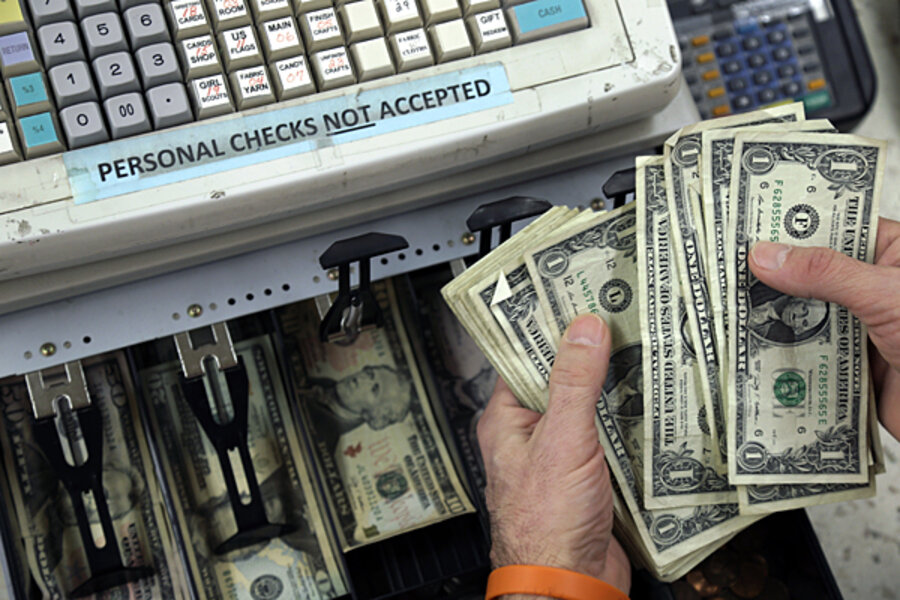Strong rise in consumer spending caps good week in economic news
Loading...
We’re still shopping: Consumer spending rose 0.7 percent in February, picking up at the fastest clip in five months. The growth was higher than many analysts’ forecast and further evidence that the US economy is continuing its slow but steady recovery.
Like January, the boost in spending was in large part due to higher gas prices – Americans spent 35 cents more for gasoline last month. But rising personal income and a slow rise in inflation has offset the expiration of the payroll tax hike, which left most US workers with less take-home pay than last year.
The growth in spending is “despite the recent increase in gasoline prices and, more pertinently, the tax hikes hitting households in the wake of the fiscal cliff,” Barclays economist Peter Newland wrote in an e-mailed analysis. “That households have been able to smooth through the decline in incomes and support consumption by diminishing savings is a clearly encouraging sign for growth in the near term.”
“Data ranging from employment to factory activity has so far shown little sign the tighter fiscal policy has been a major drag on the economy,” Reuters reports.
We have (slightly) more money: Exceeding expectations, personal income increased 1.1 percent in February, according to the Bureau of Economic Analysis. This was largely a correction from January’s 4 percent drop, which was skewed by the payroll tax hike. “A 0.6 percent increase in wages and salaries was supported by a 2.0 percent gain in rental income and an 11.9 percent rebound in dividend income,” Mr. Newland wrote. “This translated into a 0.7 percent increase in real disposable income, following a 4.0 percent drop in January. The savings rate rebounded to 2.6 percent from 2.2 percent.”
Home sales pause, but recovery rolls along: Sales of new single-family homes fell 4.6 percent in February, settling down after January’s 13.1 percent spike. Some 411,000 new homes were sold last month, a 12.3 percent gain from February 2012. Pending sales of existing homes also dipped slightly, at 0.4 percent, but still saw a 5 percent year-over-year gain. The housing industry continues to warn that an inventory shortage in some areas could be hampering further recovery in some markets.
Home prices continue to rise steadily: The S&P/Case-Shiller 20-city home price Index rose 1.02 percent in January from December, which also saw an upwardly revised increase of 0.92 percent. “None of this means housing is back to normal,” writes Brian Westbury, chief economist at research firm First Trust, in an e-mailed analysis. “It’s still got a long way to go, but it appears to be solidly on its way. We expect more big gains ahead.”
Consumers are confident … maybe: On Tuesday, the business research group the Conference Board reported a drop in consumer confidence in March. The group’s consumer confidence index fell to 59.7 in March from 68.0 in February. “The recent sequester has created uncertainty regarding the economic outlook and as a result, consumers are less confident," Lynn Franco, the group's director of economic indicators, wrote in the accompanying press release.
But Friday, the Reuters/University of Michigan Consumer Sentiment Index saw an unexpected increase in consumer confidence for March, reporting that this month’s lower gas prices, stock market highs, and housing recovery allayed concerns over federal spending cuts.
GDP a slow but pleasant surprise: The US Commerce Department revised estimates of 2012 fourth-quarter economic growth upward. The 0.4 percent annualized growth rate was the slowest since 2011, but higher than what analysts had originally predicted.








